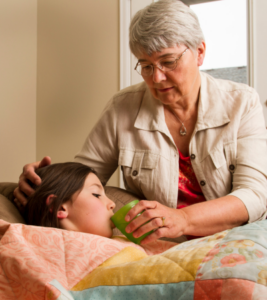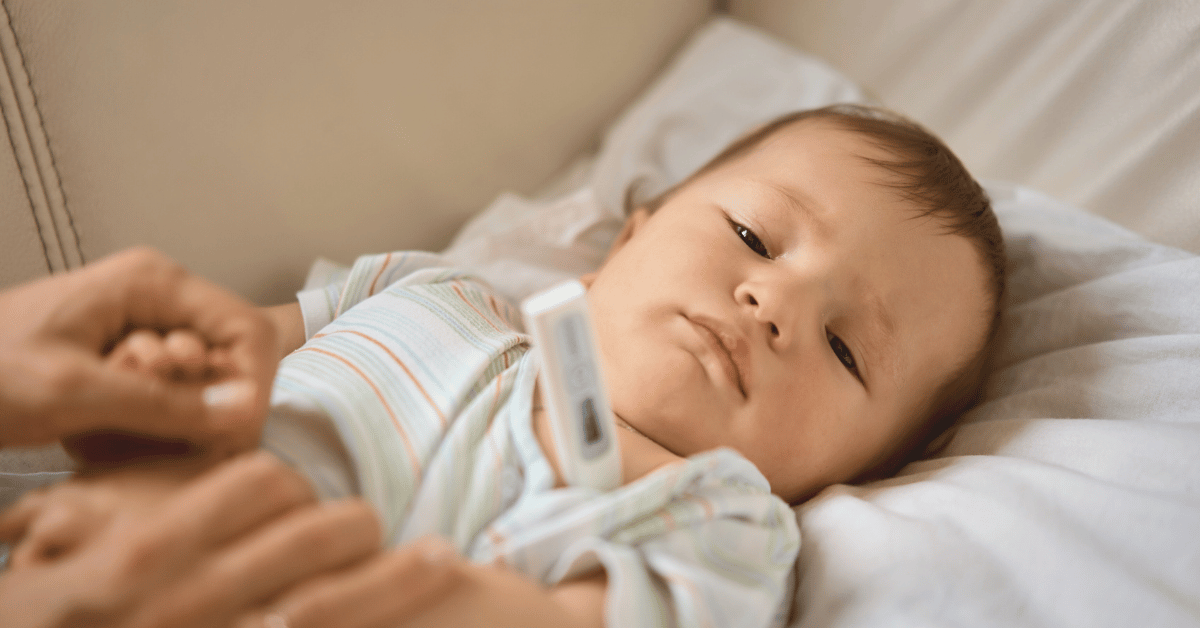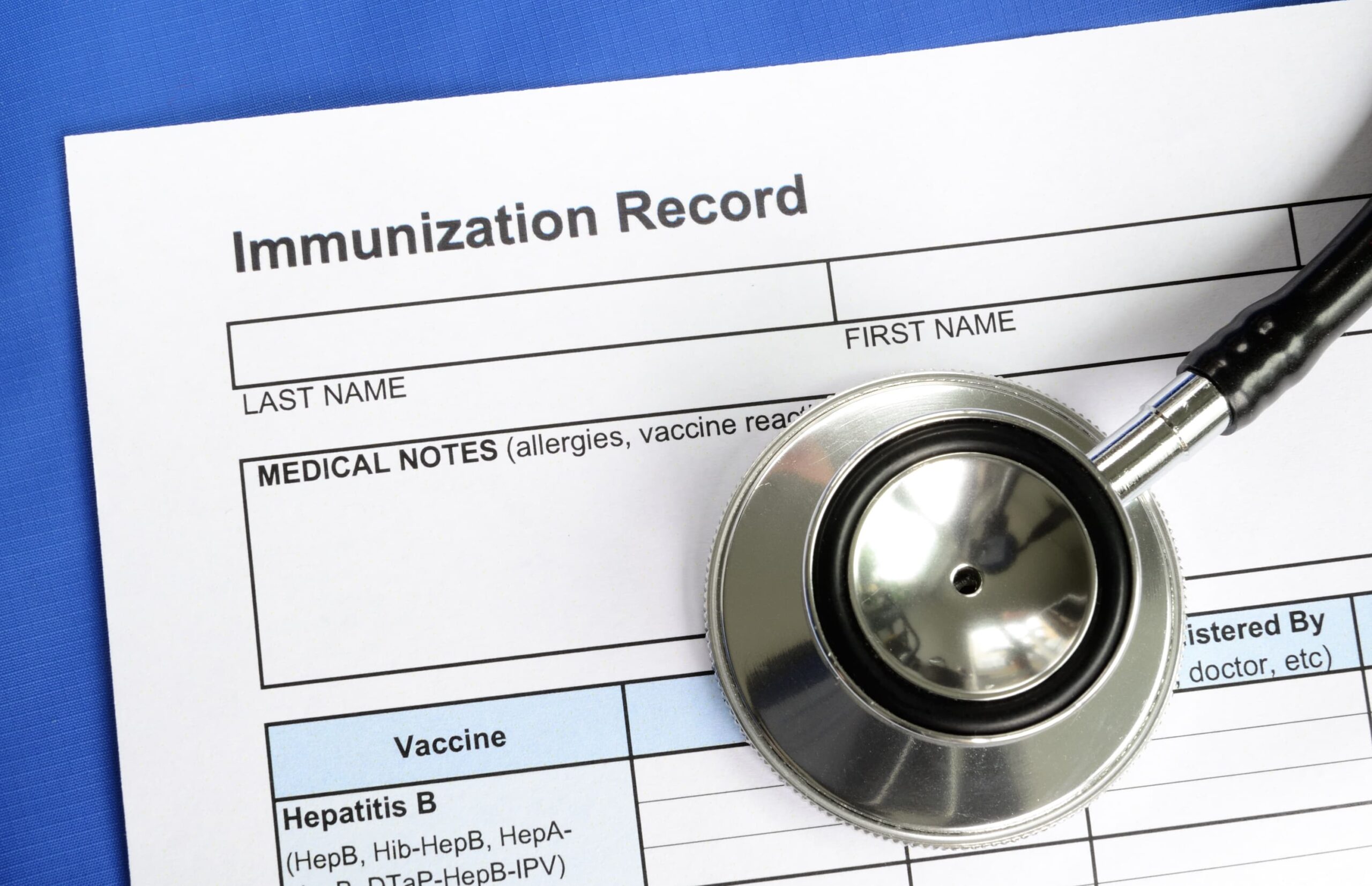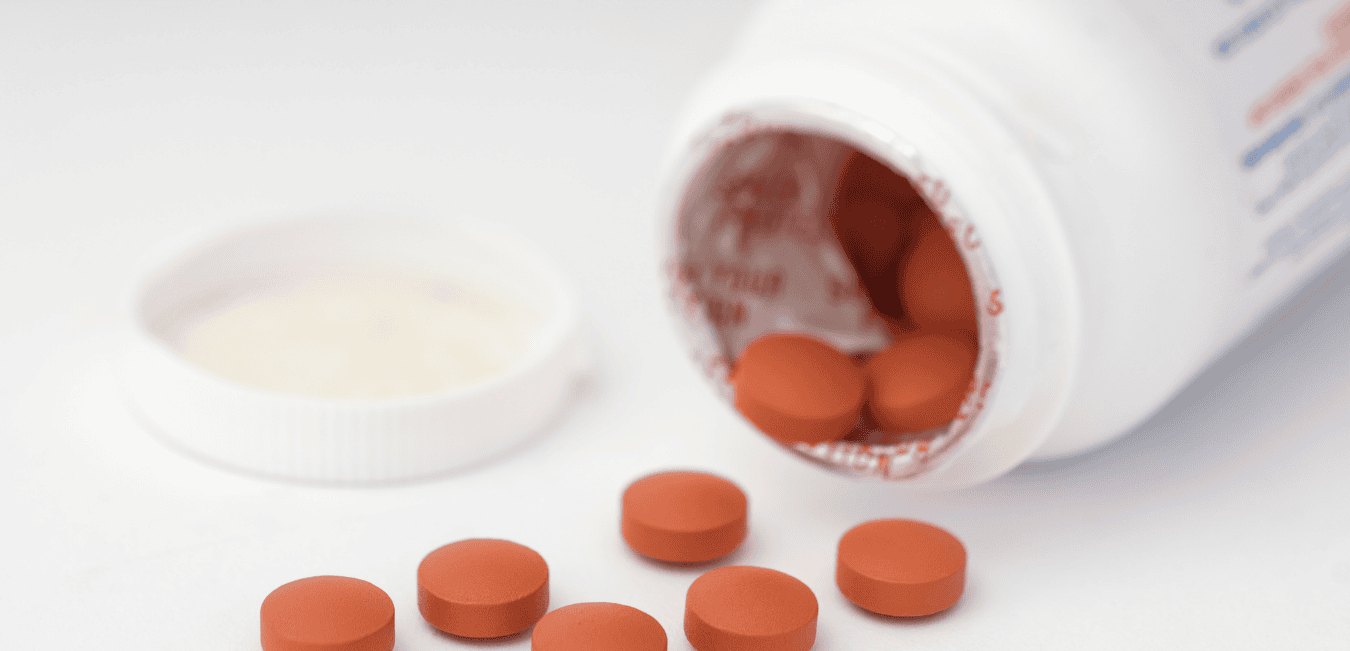Febrile seizures are a topic of concern for many parents, leaving them to wonder: Can I prevent a febrile seizure? What do I do if my child has a febrile seizure? Do febrile seizures have lasting effects? How should I approach vaccination if my child has a history of febrile seizures? Are there any natural treatments? This article explains what febrile seizures are and provides information for parents on what to do during a febrile seizure and when to call a doctor, as well as offers possible preventive options.
 What Is a Febrile Seizure?
What Is a Febrile Seizure?
A febrile seizure is a convulsion in a child triggered by a fever, typically from an infection. These seizures are most common in young children between the ages of 6 months and 5 years (1,2). Febrile seizures can be caused by fevers of any degree, not only by high fevers. It is often stated that the speed by which a fever rises is associated with a greater risk of febrile seizure, but research on this is lacking (3)
Simple v. Complex Febrile Seizures
Febrile seizures are categorized into two types (3):
- Simple Febrile Seizures: These are more common and are characterized by generalized seizures that last less than 15 minutes and do not recur within a 24-hour period.
- Complex Febrile Seizures: These may last longer than 15 minutes or occur more than once within 24 hours, or are focal in nature, affecting only a part of the body.
Complex febrile seizures are generally considered to carry a slightly higher risk compared to simple febrile seizures (4). While most febrile seizures, including complex ones, do not result in long-term harm, children who experience complex febrile seizures have a slightly higher risk of developing epilepsy later in life compared to those with simple febrile seizures, though the overall risk remains low (3).
Signs & Symptoms of Febrile Seizures
The primary sign of a febrile seizure is a full-body convulsion, which may involve any of the following signs usually accompanied by a fever:
- Loss of consciousness
- Shaking or stiffening of limbs
- Rolling eyes
- Occasional loss of bladder or bowel control
How to Respond to a Febrile Seizure
If your child has a febrile seizure, follow these steps:
- Keep them on a soft surface, away from hard objects.
- Turn them onto their side to keep their airway clear.
- Don’t restrain them or put anything in their mouth.
- Monitor the time; if it lasts longer than 5 minutes, call emergency services.
Do Febrile Seizures Cause Lasting Harm?
Febrile seizures, though alarming to witness, are generally not harmful in the long term (3). Most febrile seizures, especially simple ones, do not cause any lasting damage. In fact, the vast majority of children who experience febrile seizures recover fully without any complications (3).
Complex febrile seizures (lasts longer than 15 minutes, recurs within 24 hours, or involves only part of the body) carry a slightly higher risk of future seizures and a small increased risk of developing epilepsy later in life (3). Despite this, the overall risk remains low, and most children who experience febrile seizures, even complex ones, do not develop epilepsy or long-term neurological issues.
It’s important to note that febrile seizures are typically a response to a fever rather than a sign of an underlying neurological problem.
While febrile seizures are usually not harmful in a direct way, the sight of your child having a seizure can be terrifying, leading to significant anxiety in parents and caregivers. Even very young children can sense caregiver anxiety, which can affect their emotional state and contribute to their own anxiety. Some children may develop anxiety about having another seizure, especially in social settings. This stress can impact the entire family dynamic.
If your child has a febrile seizure, it is important to educate yourself and speak with your family doctor as understanding febrile seizures and being prepared for future ones can go a long way in reducing anxiety.
Causes of Febrile Seizures
The exact cause of febrile seizures is not fully understood, but they are primarily linked to how a child’s developing brain reacts to fevers (5), typically from viral or bacterial infections. Examples of viral infections that may be associated with febrile seizures include:
- Influenza
- Roseola
- Enterovirus
- Respiratory Syncytial Virus (RSV)
- Adenovirus
- Parainfluenza viruses
- Covid-19
Less common bacterial infections can also be a trigger for febrile seizures. Examples of bacterial infections that may be associated with febrile seizures include:
- Bacterial Ear infections (Otitis media)
- Strep throat
- Scarlet fever
What To Do If Your Child Has A Febrile Seizure
When children have a seizure, it is sometimes difficult to know what to do. Thinking about seizure management ahead of time can make the situation less stressful. The main thing to keep in mind when someone is having a seizure is to make sure that they don’t harm themselves with convulsions and that their breathing is unimpeded.
These are the recommended steps to take when a child has a febrile seizure:
- Gently place the child on the floor or ground.
- Remove any nearby objects that may cause harm or hazard.
- Make sure that clothes aren’t tight around the head or neck.
- Position the child on their side to prevent choking.
- Watch for signs of breathing difficulty, including a bluish color of the face.
- Time the length of the seizure.
- If the seizure lasts less than five minutes, call the doctor when it is over for further advice.
- If the child turns blue, the seizure lasts more than five minutes, or the child has a stiff neck and a seizure, call 911 for an ambulance.
It is also important to know what NOT to do while a child is having a seizure:
- Do not put anything in the child’s mouth.
- Do not restrain the child.
- Do not try to cool the child with fever medicine or cold water.
When to Call a Doctor For Febrile Seizures
It is important to seek medical attention if:
- It’s the child’s first febrile seizure.
- Your child is younger than 3 months or older than 6 years of age.
- The seizure lasts longer than 5 minutes
- The child has difficulty breathing during or afterward.
- The seizure involves only certain parts of the body.
Risk Factors Associated With The Occurrence of Febrile Seizures
There are multiple risk factors associated with febrile seizures:
- Age: Febrile seizures are most common in toddlers (6).
- Family history: Children are at a higher risk of febrile seizures if one or both parents experienced them in childhood. Additionally, if a child has had febrile seizures, the likelihood increases that their siblings may also experience them (6).
- Previous febrile seizure: If a child has already had one febrile seizure, they have about a 30% chance of having another during a separate fever event (6).
Can Febrile Seizures Be Prevented?
Unfortunately, febrile seizures cannot be reliably prevented. If your child has a fever, the best thing you can do will be to keep them hydrated and comfortable. Do not try to aggressively cool your child down, for example with a cold bath, and make sure to dress your child in clothes that are comfortable rather than bundling them up excessively.
 To learn more about home care for fevers, read these articles: Fevers 101: Benefits, Home Care Strategies, & When to Medicate, 10 Homeopathic Remedies For Treating Fevers, and Fever Management: Herbal Teas Safe in Childhood.
To learn more about home care for fevers, read these articles: Fevers 101: Benefits, Home Care Strategies, & When to Medicate, 10 Homeopathic Remedies For Treating Fevers, and Fever Management: Herbal Teas Safe in Childhood.
Outside of the above foundational care practices that should be done for fevering children, there may be some additional things that can reduce the likelihood of your child experiencing febrile seizures, though it is important to note that the research in many of these areas is lacking.
Does Fever-Reducing Medication Reduce Seizure Risk?
It may seem logical that fever-reducing medications would lower the likelihood of febrile seizures, however, research shows that antipyretics do not prevent febrile seizures from occurring. There is some very limited evidence that the use of antipyretics may reduce the risk of a second seizure during the same fever episode (7). Parents should administer fever-reducing medications as they would for any child to manage discomfort and fever, without expecting them to prevent seizures.
To learn more about when to medicate, read this article: Fevers 101: Benefits, Home Care Strategies, & When to Medicate. To learn more about the safety of fever-reducing medications, read this article: Are Over-The-Counter Painkillers Safe?
The Emerging Role of Melatonin In Febrile Seizure Prevention
Melatonin is receiving some attention for its possible role in the prevention of febrile seizures in children (8). If you are interested in trying melatonin supplementation for your child, speak to your doctor first. The doses given in the trial are higher than standard melatonin doses and have some risk of side effects. This should be monitored by a physician.
Here are studies to discuss with your child’s doctor:
1) Efficacy of Melatonin for Febrile Seizure Prevention: A Clinical Trial Study
Nutrient Deficiencies Associated with Febrile Seizures
Certain nutrients are found to be lower in children with febrile seizures, including zinc (9), sodium (10), melatonin (11), magnesium (12), vitamin D (13), and vitamin B12 (14). While the research is less conclusive, there may also be a connection between low levels of selenium (15) and iron (16) and the likelihood of febrile seizures in children.
At present it is unknown whether or not correcting these nutrients levels would reduce the risk of febrile seizure. For example, some recent clinical trials assessed the benefit of supplementing children prone to febrile seizures with zinc over the course of a year in order to reduce the risk of seizure. These studies found no benefit to the zinc supplementation in terms of reducing risk of febrile seizure (17).
We present these nutrient depletion associations to you for your information, but as stated above, we can’t say with confidence that boosting these nutrient levels would reduce risk of febrile seizures.
Vaccines and Febrile Seizures
Certain vaccines, such as the MMR (Measles, Mumps, Rubella) and MMRV (Measles, Mumps, Rubella, Varicella) vaccines, are occasionally associated with febrile seizures (18,19). These seizures are typically related to the fever that follows vaccination, rather than a direct response to the vaccine itself.
A personal or family history of seizure is listed as a precaution for the MMRV (combined measles-mumps-rubella-varicella) vaccine, but not as a complete contraindication.This means that the MMR vaccine and varicella vaccine are still recommended for children with a history of febrile seizures. In this case, the MMR vaccine should be given separately from the varicella vaccine (20). However, they can still be given in the same visit (just not in the same shot).
Discuss with your pediatrician if your child has a history of febrile seizures. In some cases, fever reducers may be recommended before vaccination, though their effectiveness is uncertain.
To learn more about vaccines, check out our Vaccine Strategy Guide.
Summary
Febrile seizures are convulsions triggered by a fever, most common in children 6 months to 5 years of age. They are usually harmless but can be very scary to witness. There are two types of febrile seizures: simple (less than 15 minutes, no recurrence within 24 hours) and complex (longer or recurring).
While febrile seizures generally don’t cause long-term harm, complex ones carry a slightly higher risk of epilepsy. Treatment includes keeping the child safe during the seizure, timing the event, and seeking medical attention if the seizure lasts over 5 minutes.
Natural treatments like taking melatonin and addressing nutrient deficiencies (e.g., zinc, magnesium) are being explored but require more research.
Vaccines, especially MMR and MMRV, can sometimes be linked to febrile seizures due to post-vaccine fever, but are generally still recommended for children with a history of febrile seizures: a personal or family history of febrile seizure is not usually accepted as grounds for a medical exemption.
References:
- Smith, D. K., Sadler, K. P., Benedum, M. (2019). Febrile Seizures: Risks, Evaluation, and Prognosis. Am Fam Physician. 2019 Apr 1;99(7):445-450. PMID: 30932454.
- Laino, D., Mencaroni, E., Esposito, S. (2018). Management of Pediatric Febrile Seizures. Int J Environ Res Public Health. 2018 Oct 12;15(10):2232. doi: 10.3390/ijerph15102232. PMID: 30321985; PMCID: PMC6210946.
- Sadleir, L. G., & Scheffer, I. E. (2007). Febrile seizures. BMJ (Clinical research ed.), 334(7588), 307–311. https://doi.org/10.1136/bmj.39087.691817.AE
- Maher, J., McLachlan, RS. (1995). Febrile convulsions. Is seizure duration the most important predictor of temporal lobe epilepsy? Brain. 1995 Dec;118 ( Pt 6):1521-8. doi: 10.1093/brain/118.6.1521. PMID: 8595481.
- Mosili, P., Maikoo, S., Mabandla, M. V., & Qulu, L. (2020). The Pathogenesis of Fever-Induced Febrile Seizures and Its Current State. Neuroscience insights, 15, 2633105520956973. https://doi.org/10.1177/2633105520956973
- National Institute of Neurological Disorders and Stroke. (2023, November 28). Febrile Seizures. Www.ninds.nih.gov. https://www.ninds.nih.gov/health-information/disorders/febrile-seizures
- Hashimoto, R., Suto, M., Tsuji, M., Sasaki, H., Takehara, K., Ishiguro, A., Kubota, M. (2021). Use of antipyretics for preventing febrile seizure recurrence in children: a systematic review and meta-analysis. Eur J Pediatr. 2021 Apr;180(4):987-997. doi: 10.1007/s00431-020-03845-8. Epub 2020 Oct 30. PMID: 33125519.
- Assawabumrungkul, S., Chittathanasesh, V., & Fangsaad, T. (2022). Efficacy of melatonin for febrile seizure prevention: A clinical trial study. Neuroscience Informatics, 2(3), 100089–100089. https://doi.org/10.1016/j.neuri.2022.100089
- Abid, M., Rakshit, S. C., Selim, A. K., & Hassan, T. (2008). Zinc concentration in serum and cerebrospinal fluid simultaneously decrease in children with febrile… ResearchGate; Wiley. https://www.researchgate.net/publication/23262001_Zinc_concentration_in_serum_and_cerebrospinal_fluid_simultaneously_decrease_in_children_with_febrile_seizure_Findings_from_a_prospective_study_in_Bangladesh
- Kiviranta, T., Airaksinen, E. M. (1995). Low sodium levels in serum are associated with subsequent febrile seizures. Acta Paediatr. 1995 Dec;84(12):1372-4. doi: 10.1111/j.1651-2227.1995.tb13571.x. PMID: 8645953.
- Tarcin, G., Aksu Uzunhan, T., Kacar, A., Kucur, M., & Saltik, S. (2020). The relationship between epileptic seizure and melatonin in children. Epilepsy & Behavior, 112, 107345. https://doi.org/10.1016/j.yebeh.2020.107345
- Mohamed, Z. A., Tang, C., Thokerunga, E., Jimale, A. O., & Fan, J. (2022). Serum hypomagnesemia is associated with febrile seizures in young children. AIMS neuroscience, 9(4), 551–558. https://doi.org/10.3934/Neuroscience.2022032
- Bhat, J. A., Bhat, T. A., Sheikh, S. A., Wani, Z. A., & Ara, R. (2020). Status of 25-hydroxy vitamin D level in simple febrile seizures and its correlation with recurrence of seizures. Avicenna journal of medicine, 10(1), 6–9. https://doi.org/10.4103/ajm.ajm_57_19
- Özkale, Y., Erol, İ., Kılıçarslan, B., Özkale, M., Saygı, S., Sarıtürk, Ç., Sezgin, N. (2015). Serum vitamin B12, folic acid, and homocysteine levels in children with febrile seizure. Turk J Pediatr. 2015 Jul-Aug;57(4):345-52. PMID: 27186696.
- Mahyar, A., Ayazi, P., Fallahi, M., Javadi, A. (2010). Correlation between serum selenium level and febrile seizures. Pediatr Neurol. 2010 Nov;43(5):331-4. doi: 10.1016/j.pediatrneurol.2010.05.024. PMID: 20933176.
- Sadeghzadeh, M., Khoshnevis Asl, P., & Mahboubi, E. (2012). Iron status and febrile seizure- a case control study in children less than 3 years. Iranian journal of child neurology, 6(4), 27–31.
- Kumar, M., Swarnim, S., Khanam, S. (2021). Zinc Supplementation for Prevention of Febrile Seizures Recurrences in Children: A Systematic Review and Meta-Analysis. Indian Pediatr. 2021 Sep 15;58(9):857-860. Epub 2021 Aug 2. PMID: 34338220.
- Li, X., Lin, Y., Yao, G., Wang, Y. (2018). The Influence of Vaccine on Febrile Seizure. Curr Neuropharmacol. 2018;16(1):59-65. doi: 10.2174/1570159X15666170726115639. PMID: 28745219; PMCID: PMC5771385.
- Vestergaard, M., Hviid, A., Madsen, KM., Wohlfahrt, J., Thorsen, P., Schendel, D., Melbye, M., Olsen, J. (2004). MMR vaccination and febrile seizures: evaluation of susceptible subgroups and long-term prognosis. JAMA. 2004 Jul 21;292(3):351-7. doi: 10.1001/jama.292.3.351. PMID: 15265850.
- CDC. (2002). MMRV Questions and Answers for Healthcare Providers. (June 7). Www.cdc.gov. https://www.cdc.gov/vaccines/vpd/mmr/hcp/vacopt-faqs-hcp.html









One Comment